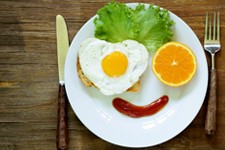
Easter, creativeness in the family: let’s colour the eggs with spices, fruits and vegetables
The custom of giving eggs at the beginning of spring as a good omen for the reawakening of nature dates back to ancient peoples: it is found in fact in the Persian traditions, which expands then to Egypt, to Greece, to arrive up to China.
With the advent of Christianity, the egg as a symbol of a return to life is associated with the celebration of Easter: the meaning of rebirth for the succession of seasons is then added to the religious one.
The decoration of Easter eggs began instead in the Middle Ages.
From now on, beside natural eggs begin to appear also those ones made of other materials, increasingly valuable up to arrive, at the end of nineteenth-century, to the Fabergé eggs: in these eggs-jewel of the Russia of the czars appears for the first time the idea of a surprise, to hide inside.
The last century has finally revised the tradition of Easter eggs with a novelty that has earned a universal success: the birth of the chocolate eggs, for a greater satisfaction of our palates.
Let’s now go back to the decoration of eggs to make it a moment of creativity, of well-being in the family and, at the same time, to take the opportunity to make our children discover a new and fun side of fruits and vegetables: in fact we will use them, along with some spice, to get the colours in which to dip our boiled eggs.
For a nice bright pink colour, for example, boil 300-400g of raspberries (frozen are fine) in 500mls of water for 5 minutes and then add the lemon juice. If, instead of raspberries, we use red beetroot, we will have a darker and more intense colour, while with the skins of red onions we will have a more delicate pink.
Through the same procedure, from frozen blueberries we will get a nice purplish blue, while from two teaspoons of turmeric or paprika we will respectively get a beautiful yellow and a cheerful orange.
We will get the green colour by boiling a handful of spinach, or by mixing blue and yellow that we have already prepared.
And for the brown colour, it will help us a few teaspoons of instant coffee.
Let’s put each colour in different bowls, and dip the just made hard-boiled eggs, still hot.
Let the eggs cool down completely leaving them dipped in dye, then let’s take them out and make them finally dry on blotting paper.
Now we are ready to arrange a nice colourful basket to bring on the table of the Easter Day, in which our eggs will cheerfully accompany the traditional early salad.

